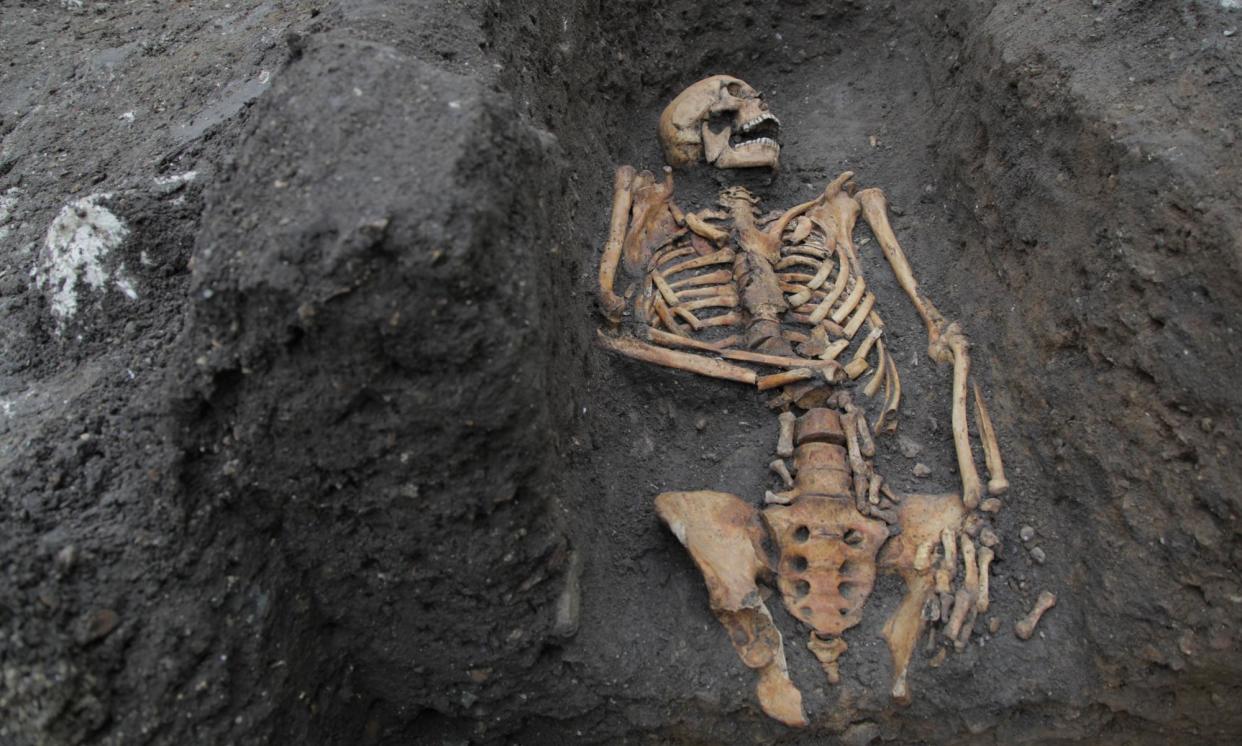Crypt by Alice Roberts review – resurrecting the past

In 2008 a stash of human bones was discovered in a ditch running under St John’s College, Oxford. They dated from the Anglo-Saxon period and, once reassembled, revealed themselves as the remains of 35 young adult males. The fact that these men had been thrown into a mass grave, with none of the usual pieties, suggested that they were outlaws of one kind or other. At the time England was engaged in a war of attrition with “the Danes” (a generic description that encompassed people from across Scandinavia), so the most likely explanation was that these unfortunate skeletons belonged to prisoners of war.
But on closer examination, explains Alice Roberts in this gripping set of tales from the crypt, the bones told a different story. There was no evidence of the badly healed old fractures that you would expect in fighting men. All the violence – savage lunges to the skull and puncture wounds to the vertebra – had occurred at the moment of death. Further testing on the teeth, which hold clues about childhood environment, showed that these men had grown up on a diet rich in fish protein, unusual for landlocked Oxford. The conclusion must be that they were indeed of Scandinavian origin but, far from being soldiers, they were settled civilians who had met a catastrophic end.
At this point the historical record kicks in. In 1002 King Æthelred declared that “all the Danes who had sprung up in this island … were to be destroyed by a most just extermination”. He added in a bit of Christian rhetoric about them being weeds in a field of wheat and unleashed an unholy terror. What the archaeologists had uncovered in the Oxford trench was evidence not of war, but of savage ethnic cleansing.
Roberts uses this extended case history to demonstrate how the disciplines of osteoarchaeology, palaeopathology, osteobiology and, newest of all, archaeogenomics, are increasingly used to modify, amplify and even correct written records with all their slant and spin. Thanks to scientists’ ability to sequence entire ancient genomes from old bones, it has recently become possible to trace the wider social impact of trade and conflict on early populations. One of the figures in the St John’s ditch turns out to be closely related to a man buried on the island of Funen in Denmark: grandfather and grandson perhaps, possibly even half-brothers. Here is snapshot evidence of the way that individuals migrated around the edges of the North Sea in the century before the Norman conquest.
There are six further deep dives in the book. One of the most intriguing concerns the Justinianic plague, which ravaged the Byzantine empire in the sixth century. We’re shown that it actually reached Britain, a fact on which historical documents are entirely silent. Another involves a medieval hospital attached to an abbey in Runcorn, where many of the extracted bones are oddly thick and heavy. DNA investigation showed that the patients to whom these skeletons belonged had been suffering from a condition similar to Paget’s disease, named after the Victorian pathologist who first identified it. This disorder is less widespread and less virulent today, although there is a cluster of patients in the north-west of England that no one can quite explain. Information about the disease’s earlier, nastier precursor has helped scientists and doctors develop protocols to treat modern-day sufferers.
All this is fascinating. Where Roberts’s book sometimes lags is in passages of narrative history that she is obliged to supply in order for the bones to have their say. There are extensive and inert sections on the Reformation to account for the burial patterns at Runcorn Abbey. Likewise, a history of the transmission of syphilis is required to explain the cratered bones of the 16th-century noblewoman who chose to live as an anchorite, bricked in for life at the church of All Saints, York. The conclusion has to be that while bodily remains tell excellent tales, they require an equally vivid historical context if they are to come fully alive.
• Crypt: Life, Death and Disease in the Middle Ages and Beyond by Alice Roberts is published by Simon & Schuster (£22). To support the Guardian and Observer, order your copy at guardianbookshop.com. Delivery charges may apply.


